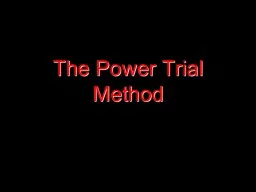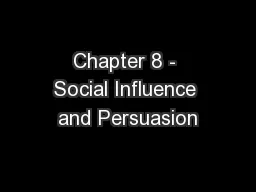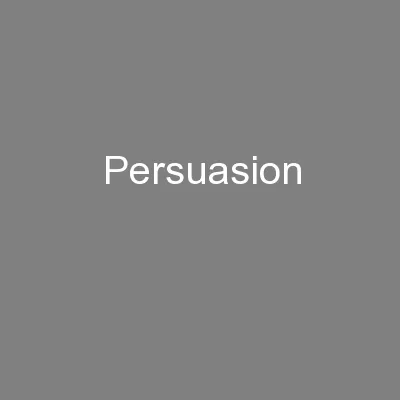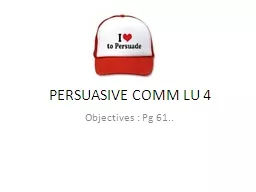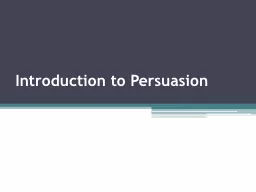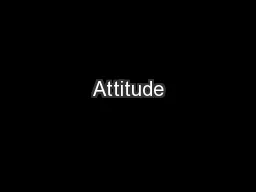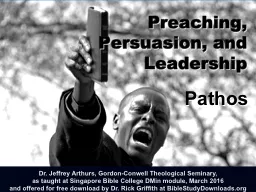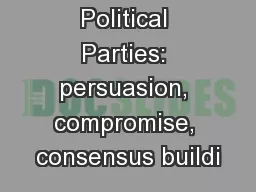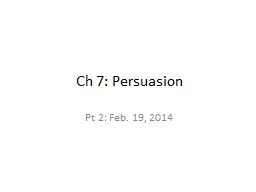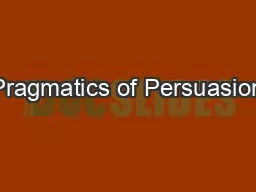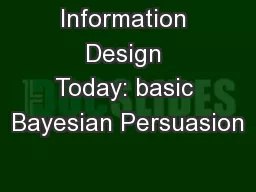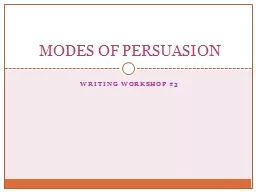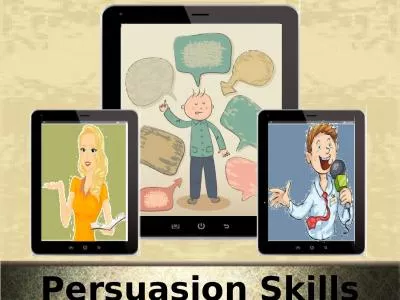PPT-The Power Trial Method The Art of Persuasion
Author : alida-meadow | Published Date : 2018-11-10
Time to Kill Why Persuasive PUBLIC SPEAKING Memorization Thinking under Pressure Working with a Team Things they teach you NOT to do when taking education classes
Presentation Embed Code
Download Presentation
Download Presentation The PPT/PDF document "The Power Trial Method The Art of Persua..." is the property of its rightful owner. Permission is granted to download and print the materials on this website for personal, non-commercial use only, and to display it on your personal computer provided you do not modify the materials and that you retain all copyright notices contained in the materials. By downloading content from our website, you accept the terms of this agreement.
The Power Trial Method The Art of Persuasion: Transcript
Download Rules Of Document
"The Power Trial Method The Art of Persuasion"The content belongs to its owner. You may download and print it for personal use, without modification, and keep all copyright notices. By downloading, you agree to these terms.
Related Documents

